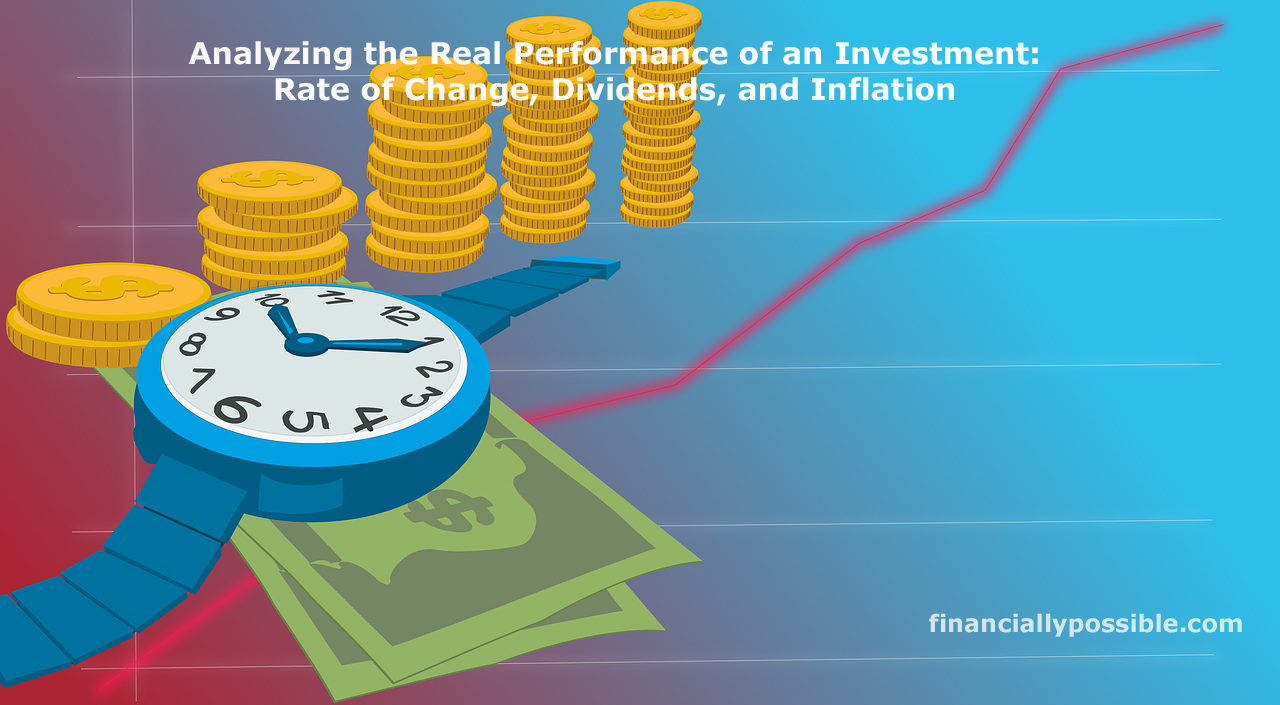Rate of Change
When an investment moves up by 1% immediately following a 1% loss, an investor may be tempted to think that the investment is right back to its original position before those moves. Not so! It’s an inverse function (y=1/x, where x is the new amount of the investment such as 0.99 following a 1% drop) and a 1.0101% (y) change upward is needed to counteract a 1% move down.
Why is this the case? On a downward move, you’re going from a bigger base to a smaller base. Whereas an upward move goes from a smaller base to a bigger base (and hence requires a bigger move when expressed as a percentage).
This difference becomes more pronounced as the percentage change becomes larger as shown in this table:
| 1/0.99 | 1.010101 | 1.0101% |
| 1/0.97 | 1.03093 | 3.093% |
| 1/0.95 | 1.05263 | 5.263% |
| 1/0.9 | 1.1111111 | 11.11% |
| 1/0.85 | 1.1765 | 17.65% |
| 1/0.8 | 1.25 | 25% |
| 1/0.75 | 1.33333 | 33.33% |
| 1/0.66666 | 1.5 | 50% |
| 1/0.5 | 2 | 100% |
| 1/0.25 | 4 | 300% |
How does this information help you as an investor? It can help you avoid the mental trap believing that a 1% move up is directly opposite of a 1% move down. It also helps you understand that when the market does make a larger downward move of say 20% over the span of a few months (or weeks) that it actually requires a 25% upward move to get back to even. This is all the more reason to buy more shares when prices become cheaper. By being willing to purchase more shares after the price has fallen, you lower your cost basis on a stock (or index fund or any other type of investment) and thereby improve your long term performance. For instance, if you buy 100 shares at $10 each and you buy 100 more shares after the price falls to $8 per share, then you only need a 12.5% gain to recover from the 20% loss instead of requiring a 25% gain (for those unwilling to purchase more shares).
Dividends and Inflation
The other key factor to consider when thinking about the performance of investments is the time value of money. In the context of the Great Depression, the 86.2% nominal drop was stunning in that it required a 725% gain just to get back to even! This is why it took 30 years for the market to reach the same inflation adjusted number at which it peaked at in 1929. The article I linked shows that after accounting for dividends, inflation, and deflation, the break even point was actually 15 years earlier in 1944 (and not in 1959). This is encouraging and I’d really like to see these charts carried forward with an additional 6 years worth of data to make them current for October 2016. The longer the holding period for an investment, the more important dividends become as a part of the total return of that investment — this is clearly shown in the first chart of the article where the spread widens further and further over many decades. The comments by anacorider and Scott Raynovich in reply to this BusinessInsider article were very thoughtful and I encourage you to take a look at both the article and those two comments.
Dividends do a great job shielding investors from temporary losses by paying them to wait, be patient, and just hold onto their investments. On the other hand, inflation exerts the opposite effect eating investors’ returns as today’s dollars (or whatever your currency is) are worth more than they will be worth on some future date. Taking both dividends and inflation into account makes it more difficult to analyze returns — one can no longer just track a headline index number. However, it’s important to recognize that upward and downward moves of the same percentage do not have the same impact on your portfolio’s performance.
Your turn!
What comes to mind as you look at the charts in the BusinessInsider article overlaying the Great Recession with the Great Depression?
Were you already aware that upward and downward moves are not the same when measured as a percentage?
Are you aware of other indicators that affect the real performance of investments?


This is exactly why I can’t stand Dave Ramsey’s advice on the stock market. He says that the average return is 12%, which isn’t right by the way. You proved exactly why people get confused with your 1% example going up and down. There’s a huge difference between average and annualized which I don’t think he gets. Anyway enough of my tangent but GREAT article.
Dave Ramsey’s primary area of expertise is on debt and debt elimination. I agree 12% is overly optimistic for long term returns in the U.S. stock market. Vanguard’s recent report for the last 90 years showed a 12% return in U.S. small caps and a 10% return in U.S. large caps. I feel both numbers may be skewed slightly high, but that we should certain expect lower returns in the future (at least for U.S. stocks — international stocks are a completely different matter).